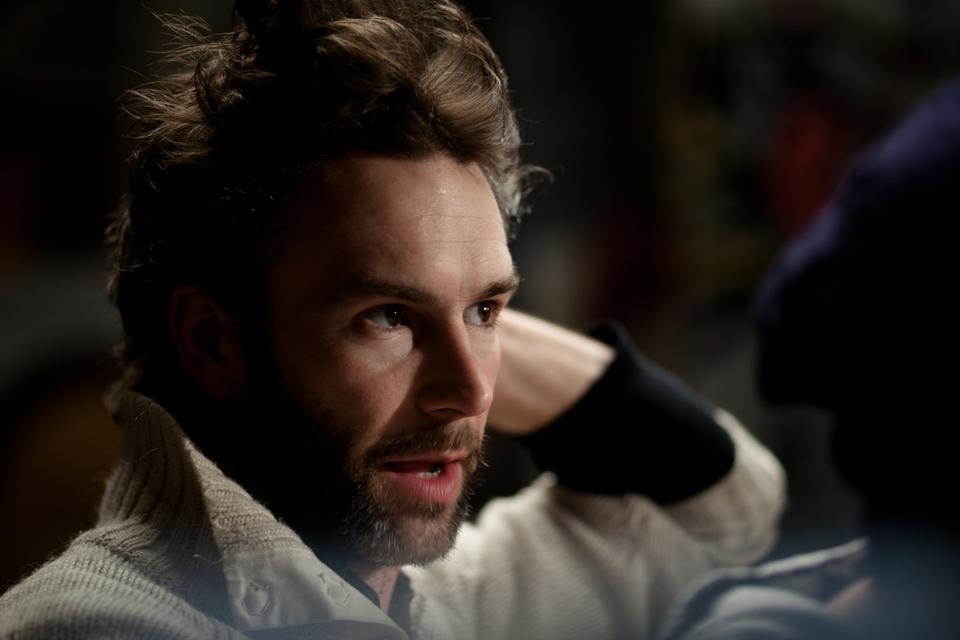
News
HMS Is Facing a Deficit. Under Trump, Some Fear It May Get Worse.

News
Cambridge Police Respond to Three Armed Robberies Over Holiday Weekend

News
What’s Next for Harvard’s Legacy of Slavery Initiative?

News
MassDOT Adds Unpopular Train Layover to Allston I-90 Project in Sudden Reversal

News
Denied Winter Campus Housing, International Students Scramble to Find Alternative Options
Portrait of an Artist: Jon Morris

“Performer with Cirque Du Soleil” is a rare credit to see on most resumes, but for Jon L. Morris, it is just one of many jobs he has taken on over his eclectic and extensive performance career. Morris has done everything from acting in a short film featured at the Sundance festival to performing in the Tony Award-winning company Theatre de la Jeune Lune to touring with the internationally acclaimed show “Fuerza Bruta.”
Recently, he started his own performance collective, The Windmill Factory, and was awarded the Thomas J. Watson Fellowship to study movement theater with Philippe Gaulier, a famous French clown and professor of theater. On Thursday, Morris will teach a master class on the basics of physical theater at the Harvard Dance Center. No dance or performance experience is required; Morris recommends that students dress to move, be ready to have a great time, and “check their Veritas at the door.“
The Harvard Crimson: What kind of performances do you create with the Windmill Factory?
Jon L. Morris: We just did a 15-minute shadow play on the side of a castle wall in Cartagena, Colombia, for a one-night, 500-person dinner. The shadow play…was on this massive castle with a wall that was 60 feet by 300 feet. We had massive projectors and moving lights…. We also had some of the best acrobats I had ever worked with on that show. Just the slightest adjustments of their bodies made the difference between seeing a frog at 60 feet or just a blob. Another wild one we did on a totally different medium was recreating the night sky on the Hudson River with solar-powered, wirelessly controlled LED lights in a piece called “Reflecting the Stars”…. So you could push a button and the Big Dipper would appear out on the water. It was raising awareness about light pollution
within our city…. Both [these examples] have this element of humanity and connectivity to the audience, and that’s the key for us. If we’re going to create an installation, people are going to be able to play with it and interact with it. If we’re going do a theater piece, we’re going to be in the audience and playing with the people.
THC: What will your collaborative performance and movement theater master class be like?
JLM: The master class that I will be teaching next week is derived from various styles of theater that I have performed in and trained in all over the world, and that’s all the way from dance and Indian dance to traditions of clowning and Stanislavski acting technique to circus and athletics…. The biggest thing in the style of theater that I am most passionate about and will work with in my master class is that it is extremely connected emotionally with very motivated movements. It is never an abstract language. There is always a purpose to it. Even if the gesture is repeating in reverse five times and not necessarily something you would see everyday, it remains motivated in a way that connects to the story and helps tell the story. It has a purpose, and in that way all the gestures in a piece connect to the storyline and help push the piece along.
THC: What has your experience been like with the show Fuerza Bruta?
JLM: I came on as part of the original cast in New York City…. I toured to Taiwan, Brazil, [and] Israel. If someone asked me what the show was about, I’d just say, “Just come and see it,” and I’d try to give them as little information as possible. But if they insisted, I’d tell them it is an incredible theatrical experience that combines dance, theater, spectacle, and a party all in the same show.
THC: How should audiences approach a show as avant-garde as Fuerza Bruta?
JLM: One of the unique things about Fuerza Bruta is that Diqui James, the [show’s artistic director and] creator, really creates such beautiful, poetic images that are like moving paintings, and they have enough character and storyline for people to latch on to, but not enough to have one interpretation. In the four years that I was in Fuerza Bruta I must have heard thousands of interpretations of what different moments, or different characters, or what the whole thing meant. And that’s really the show’s greatest strength. So when people would ask me, “What does it mean?” I’d always return the question and ask, “What do you think it means?” and I’d almost always get a different answer.
Want to keep up with breaking news? Subscribe to our email newsletter.
